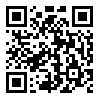

Volume 21, Issue 1 (7-2024)
ASWTR 2024, 21(1): 36-44 |
Back to browse issues page
Download citation:
BibTeX | RIS | EndNote | Medlars | ProCite | Reference Manager | RefWorks
Send citation to:



BibTeX | RIS | EndNote | Medlars | ProCite | Reference Manager | RefWorks
Send citation to:
zoghi M, ilchi M. Modeling the interaction of pulsed CO2 laser with dental hard tissues to estimate the threshold dose of laser ablation. ASWTR 2024; 21 (1) :36-44
URL: http://icml.ir/article-1-636-en.html
URL: http://icml.ir/article-1-636-en.html
Abstract: (1463 Views)
Objectives: Removing part of the tooth and preparing the cavity for restoration using mechanical tools is often painful for the patient. A new approach being developed takes advantage of the precision laser machining capability. Laboratory and clinical studies have shown that 2CO lasers at wavelengths of 9.3 μm and 9.6 μm with a high absorption coefficient in hard tooth tissues and a pulse width in the range of 10 to 20 μs for efficient removal of enamel and dentin with minimum Environmental heat damage is suitable. The aim of this study is to estimate the hardness threshold of enamel and dentin hard tissues using CO2 laser micrometer pulses emitted at a wavelength of 9.3 μm with the help of laser-tissue interaction modeling.
method: In this article, with a theoretical approach, based on the light-tissue interaction equations in the luminescence range, the depth and width of tooth dullness is estimated. Here, the changes in the degree of ablation with the change of the energy density of the 2CO laser pulse commonly used in dentistry are considered. To validate the model, the comparison of the modeling results with the experimental data of the articles using a pulsed 2CO laser at a wavelength of 9.3 μm with a change in energy density from about 2 J/cm 10 to 2 J/cm 100 was used, and the threshold dose of ablation predicted from Theory is compared with experimental values.
Findings: The amount of tooth decay is strongly dependent on the laser beam fluence. At a constant energy density, the depth and size of dentin pit is greater than that of tooth enamel. According to the theoretical results, the energy density of the luminescence threshold at the wavelength of 9.3 μm is obtained for enamel at about 2.5 J/cm and for ivory at 2.4 J/cm. The values predicted for enamel and dentin by the model are in good agreement with the laboratory results.
Conclusion: 2CO laser at a wavelength of 3.9 μm is widely accepted in dentistry for blunting the hard tissues of enamel and dentin. In order to choose the right laser energy for a specific dental application, it is necessary to know the blunting threshold energy. Laser-tissue interaction modeling, with the possibility of optimizing the laser parameters and predicting the response of materials under different conditions, is one of the methods that provides the ability of investigations that may be difficult, time-consuming or error-prone to achieve in the laboratory. By using the theoretical model based on the interaction of the laser pulse with the hard tissue of the tooth, it is possible to calculate the cutting threshold energy for tooth enamel and dentin with high accuracy, which is a good supplement for experimental studies.
method: In this article, with a theoretical approach, based on the light-tissue interaction equations in the luminescence range, the depth and width of tooth dullness is estimated. Here, the changes in the degree of ablation with the change of the energy density of the 2CO laser pulse commonly used in dentistry are considered. To validate the model, the comparison of the modeling results with the experimental data of the articles using a pulsed 2CO laser at a wavelength of 9.3 μm with a change in energy density from about 2 J/cm 10 to 2 J/cm 100 was used, and the threshold dose of ablation predicted from Theory is compared with experimental values.
Findings: The amount of tooth decay is strongly dependent on the laser beam fluence. At a constant energy density, the depth and size of dentin pit is greater than that of tooth enamel. According to the theoretical results, the energy density of the luminescence threshold at the wavelength of 9.3 μm is obtained for enamel at about 2.5 J/cm and for ivory at 2.4 J/cm. The values predicted for enamel and dentin by the model are in good agreement with the laboratory results.
Conclusion: 2CO laser at a wavelength of 3.9 μm is widely accepted in dentistry for blunting the hard tissues of enamel and dentin. In order to choose the right laser energy for a specific dental application, it is necessary to know the blunting threshold energy. Laser-tissue interaction modeling, with the possibility of optimizing the laser parameters and predicting the response of materials under different conditions, is one of the methods that provides the ability of investigations that may be difficult, time-consuming or error-prone to achieve in the laboratory. By using the theoretical model based on the interaction of the laser pulse with the hard tissue of the tooth, it is possible to calculate the cutting threshold energy for tooth enamel and dentin with high accuracy, which is a good supplement for experimental studies.
Educational: Research |
Subject:
General
Received: 2024/04/29 | Accepted: 2024/06/8 | Published: 2024/07/21
Received: 2024/04/29 | Accepted: 2024/06/8 | Published: 2024/07/21
Send email to the article author
| Rights and permissions | |
 |
This work is licensed under a Creative Commons Attribution-NonCommercial 4.0 International License. |


